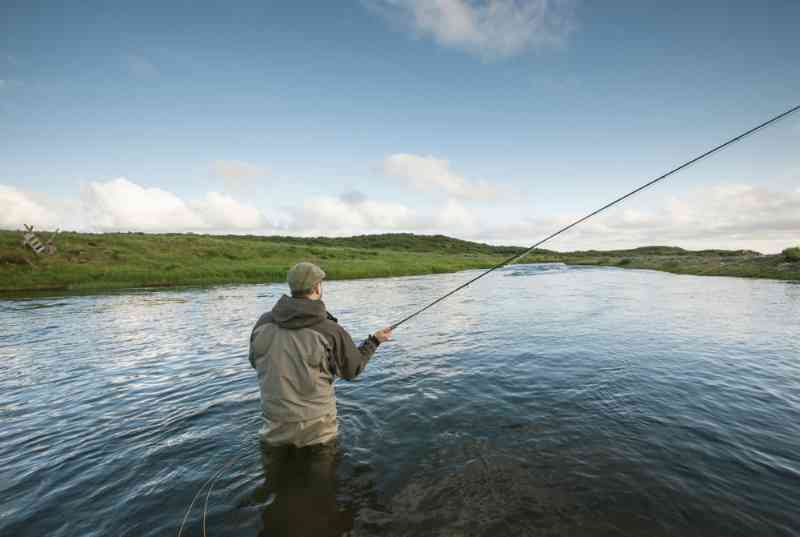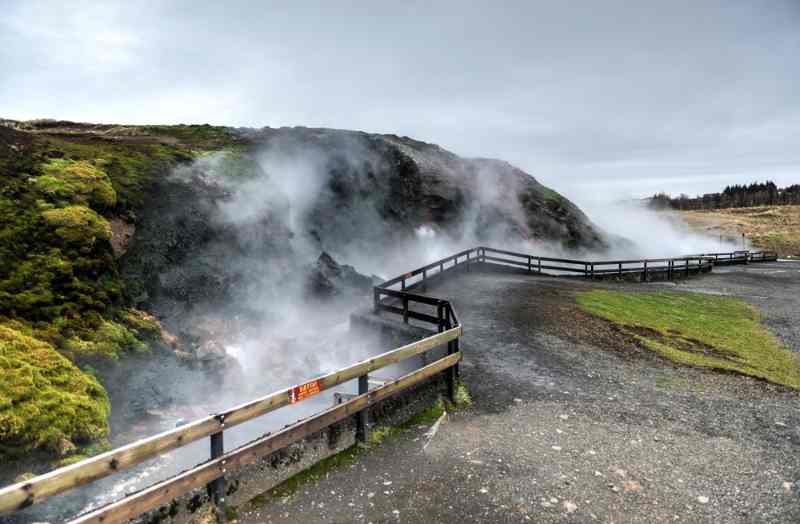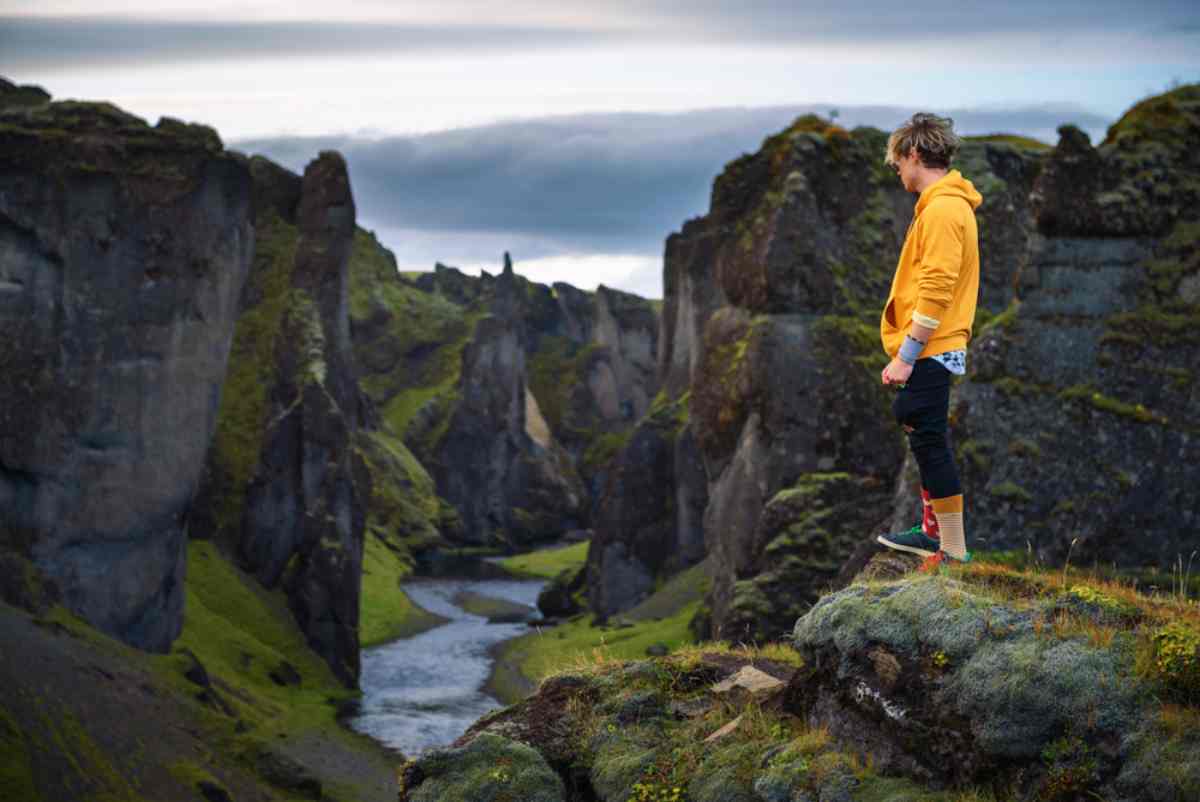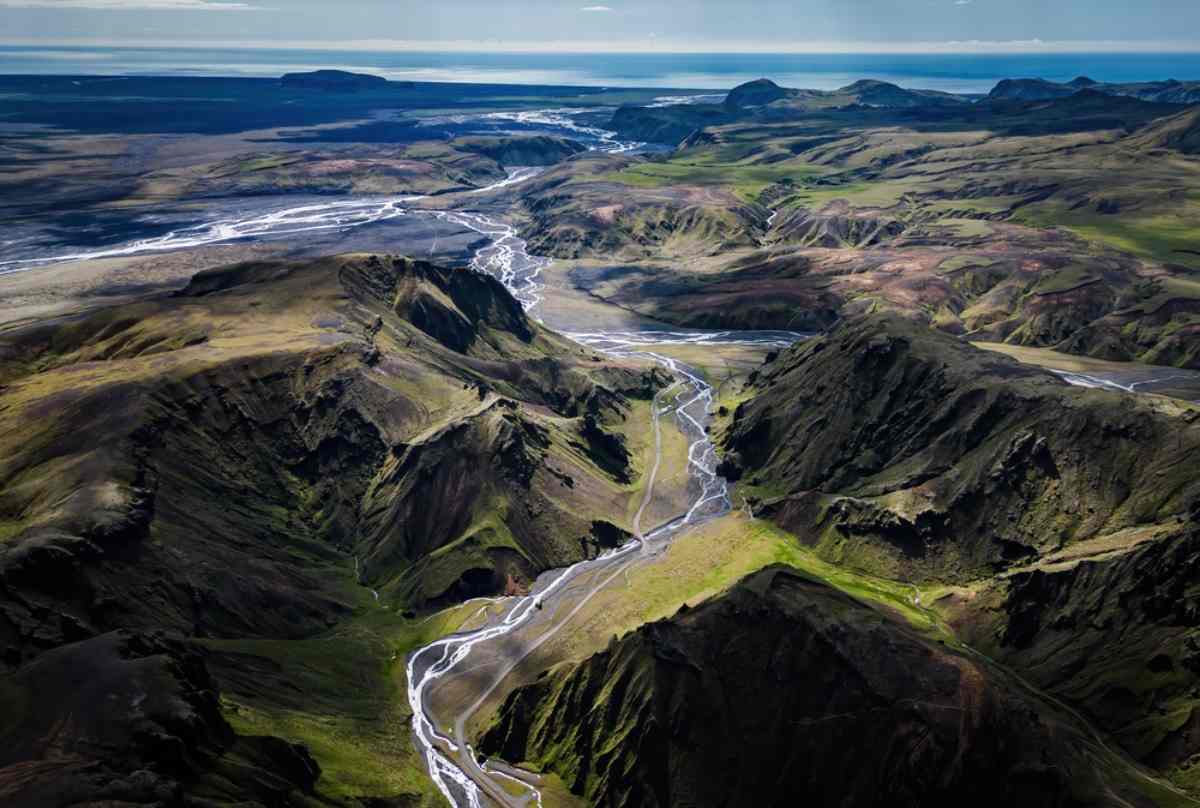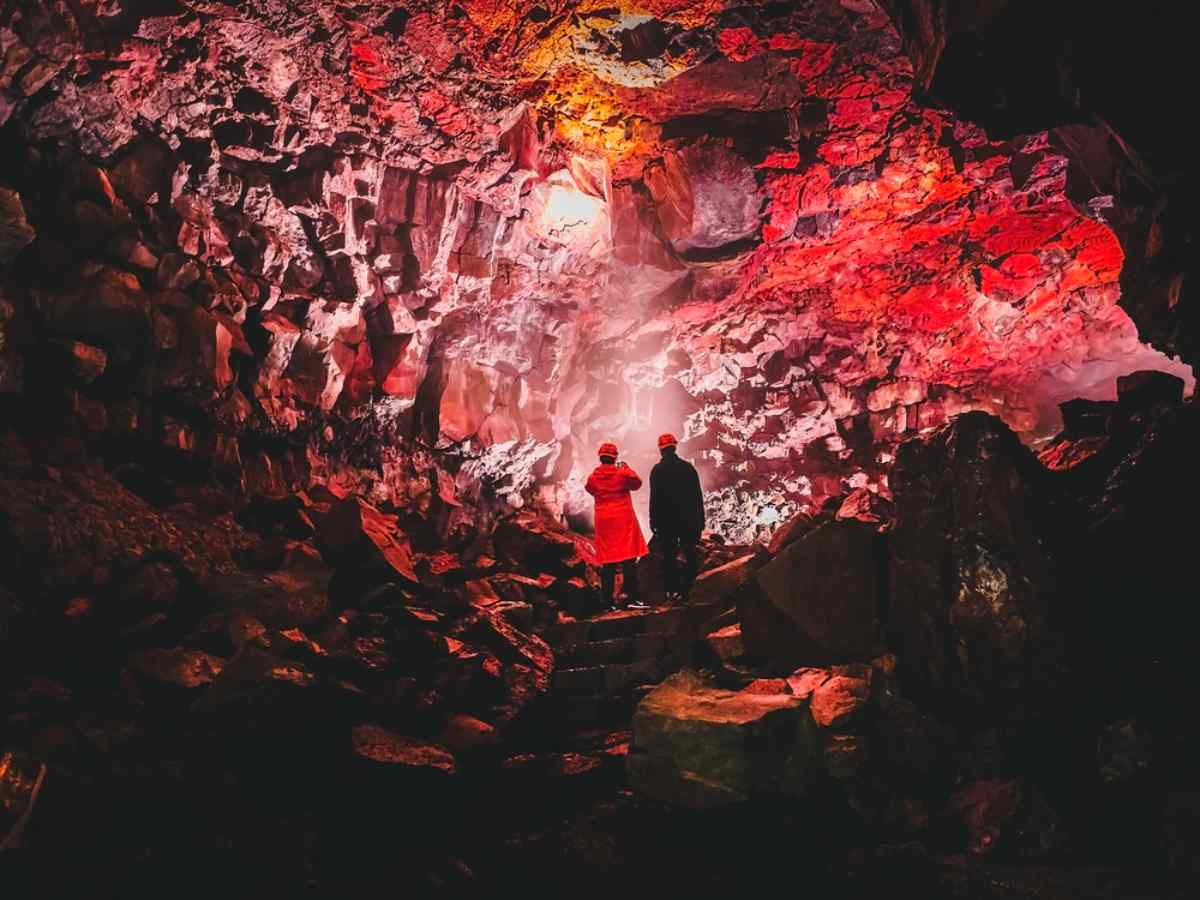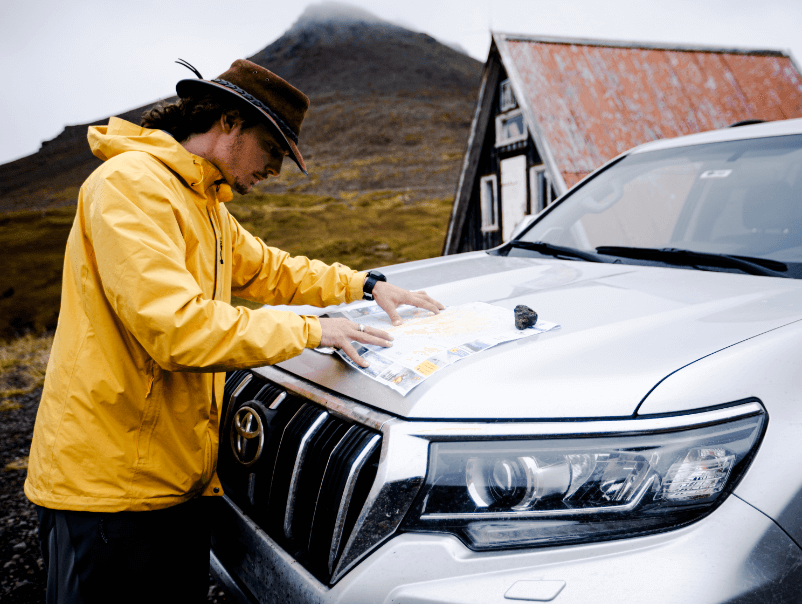One of the many stunning glaciers in Iceland sits right next to one of the country’s most notorious volcanos. Myrdalsjökull Glacier has everything we want in a glacier: It’s safe enough to wander on top of and explore from within, not far away from the main road, and it does very well in front of the camera. Keep reading to better understand why we feel so warm towards this glacier.
What is Myrdalsjökull?
If there is anything that makes the country deserve the nickname “the Land of Fire and Ice”, it’s the Myrdalsjökull Glacier. This is the fourth largest glacier in Iceland and sits on top of a large and active volcano – Katla – which is long overdue for an eruption. Luckily, there are no signs of the volcano erupting anytime soon.
Despite that, Myrdalsjökull Glacier is well-known for being incredibly beautiful to both look at and look from. It towers majestically over the landscape and is connected to stunning highland landscapes.
When climbing to the top of this ice mountain, you’ll be roughly 1,500 meters above sea level and at the center of almost 600 square kilometers of solid glacier ice. The ice is 225 meters thick on average but gets as thick as 750 meters at the center of the volcanic crater.

The Historical Significance of Myrdalsjökull Glacier
Since Myrdalsjökull has one of Iceland’s oldest volcanoes concealed under its ice, it has quite the historical significance in shaping the Iceland we know and love today. Katla has been erupting since 930 AD, and although the last eruption was in 1918, the volcano is still active today.
Since its existence, the volcano has already erupted 20 times, causing everything from massive ash clouds to glacier floods that forever changed the landscape around it. But more on these eruptions and their impacts a bit later.
The Myth Surrounding Myrdalsjökull
The myth surrounding Myrdalsjökull also concerns Katla hidden underneath its icy surface. The story tells of Katla, a housekeeper at a monastery in the 12th century. But Katla was no ordinary housekeeper – she was a witch. One day, Katla drowned a shepherd called Bardi in a vat of whey (we’re not even going to start diving into the “Why?!?!?!” there).
In fear for her life, she fled and hid in one of the cracks of the glacier, where her evil witchiness triggered an eruption that caused a major flood, completely destroying the local village and farms. This is also the reason why the volcano is named Katla.
What Makes Myrdalsjökull Glacier Different from the Other Glaciers in Iceland?
The following are some of the things that make Myrdalsjökull different from other glaciers in Iceland:
- Myrdalsjökull is Iceland’s fourth largest ice cap (so it’s even larger than Eyjafjallajökull, for example).
- The glacier covers one of the largest active volcanoes in Iceland, Katla.
- Solheimajökull is a glacier tongue of Myrdalsjökull and is one of the most popular spots for glacier hiking and ice climbing.

Where Can I Find Myrdalsjökull?
If you have ever had a road trip along the south coast of Iceland, you will have seen Myrdalsjökull Glacier. It is in the southernmost part of the Icelandic Highlands, right next to the famous Eyjafjallajökull.
At the southern tip of the glacier sits a small village with a massive problem: Vík I Mýrdal. Due to the active Katla Volcano, there is a chance that an eruption might take place and wipe away the village with a glacial flood. The recent eruption from Eyjafjallajökull was a wake-up call for the residents and has been taken very seriously for the last decade.
Volcanic Eruptions
Katla has erupted roughly every 40 to 60 years or so, but the last eruption was in 1918, which is making people nervous. If the rumbling volcano under the Myrdalsjökull Glacier erupts, that might mean the end for the buildings in the town. The last time Katla erupted, the debris from Myrdalsjökull glacier moved the coastline out 2-3 kilometers.
What Happens During an Eruption?
Since Myrdalsjokull Glacier in Iceland is such a massive chunk of ice, an eruption underneath it would trigger a build-up of meltwater. As soon as this water escapes the ice cap, it will come rushing out in huge volumes at an incredible speed. The glacial flood, or “Jökuhlaup” as it is called, would also contain large amounts of silt, debris, and possibly large amounts of harmful chemicals from the magma. This would cause a lot of damage to the surrounding area and can occur even without the lava coming through the ice.
Massive amounts of ash will follow as soon as the lava penetrates the ice sheet, covering incredibly large areas in poisonous ash and debris.
If a new eruption occurs, it’s believed that the only safe house in town would be the local church since it is built on a hill.

Things To Do at Myrdalsjökull Glacier
There are many ways to explore the Myrdalsjökull Glacier:
Icy Walks
The answer for those who ask whether they can walk on Myrdalsjökull Glacier is absolutely! However, you can’t simply walk up there like a Sunday stroll, you will need to go with an experienced guide. The reason is that the Myrdalsjökull Glacier isn’t safe unless you know the area, and you might risk getting stuck in hidden crevices or getting lost.
The southwestern glacial outlet, Solheimajökull, is a popular spot for glacier hikes. If you want a less extreme glacier hike experience, you should opt for this rather than the main glacier.
Ice Caving – A Frosty Adventure
For some, it’s not enough to only walk on top of the ice. The adventurous soul can choose to go inside the Myrdalsjökull Glacier and experience it from the inside. As these tours are available throughout the year, it’s a great option for the summer visitor.
Ice Cold Adrenaline Rush
If you would rather not walk or hike over the snow, you have the option of racing fast over the white landscape. First, you’ll get on a glacier truck to get over the shift between ground and ice, which will take about an hour. After that, you and your tour guides will explore the glacier on the back of the snowmobiles, enjoying the breathtaking landscape.

How Do I Get to Myrdalsjökull Glacier?
Since the glacier is quite large, there are multiple ways to reach it. Regardless of how you get there, this is a perfect part of a road trip in southern Iceland.
By Car
If you want to start your Myrdalsjokull Glacier Park trip from Vík, you only need to follow Ring Road 1 to the southern part of Iceland. It will take about 2 hours and 30 minutes to get to Vík from Reykjavik, and you will cover roughly 185 kilometers.
For the hiker who wants to approach the adventure from the north, take Ring Road 1 from Reykjavik, going east until you cross the bridge at Seljalandsfoss. After the bridge, turn onto Road 249 and continue on Road F249 until you reach Thorsmörk Nature Reserve. You will end up at the foot of the Myrdalsjökull glacier, right in the stunning Icelandic Highlands. This will take almost 3 hours, and you will drive 156 kilometers.
On a Tour
Seeing the Myrdalsjökull Glacier is one thing, but for those who want to step foot on the ice, a tour is going to be the only safe option. Tours usually start in either Vík or Reykjavik.
Helicopter
For those who want that little extra, you can buy a helicopter tour of the glacier, lifting off from either Reykjavik or Skaftafell airfiield. You won’t be able to set foot on Myrdalsjökull Glacier this way, but you will get a fantastic view.
Other Things to Do Near Myrdalsjökull
Even though you could spend an entire day on the glacier, there are plenty of other things to explore nearby. Below are some suggestions for nearby attractions.
- Fimmvörduhals
- Thorsmörk
- Vík i Mýrdal
- Reynisfjara Black Sand Beach
- Jökulsarlon Glacier Lagoon
- Eyjafjallajökull

A Few Photography Tips at Myrdalsjökull Glacier
If you would like to take a few snaps of this incredible natural wonder, the following tips should help you get that perfect shot:
Use a Wide-angle Lens
There really is no other way to bring the magnitude of the glacier to life than with an impressive panoramic shot like this.
Use Light Changes During Sunrise and Sunset
Taking snaps during these times can leave you with breathtaking images. Not only because of the actual sunrise or sunset, but because of the change in the hue of the light and the way the light plays on the ice and highlights shadows (for example, that of the glacier crevasses).
Use a Tripod
It doesn’t matter how steady you think your hand is; it won’t be steady enough to capture those ultra-clear and sharp images.
Use an Aperture of f/8 or f/11
This will give you the perfect depth of field and enough focus to truly capture the glacier's different textures.

The Chilling Thrills of Myrdalsjökull Glacier
It’s no secret that Myrdalsjökull Glacier encapsulates the very essence of Iceland, making it the perfect destination for an Iceland holiday. The road is easy, and there are plenty of sights to see along the way. Make sure to rent a campervan in Iceland and plan out your Iceland road trip.


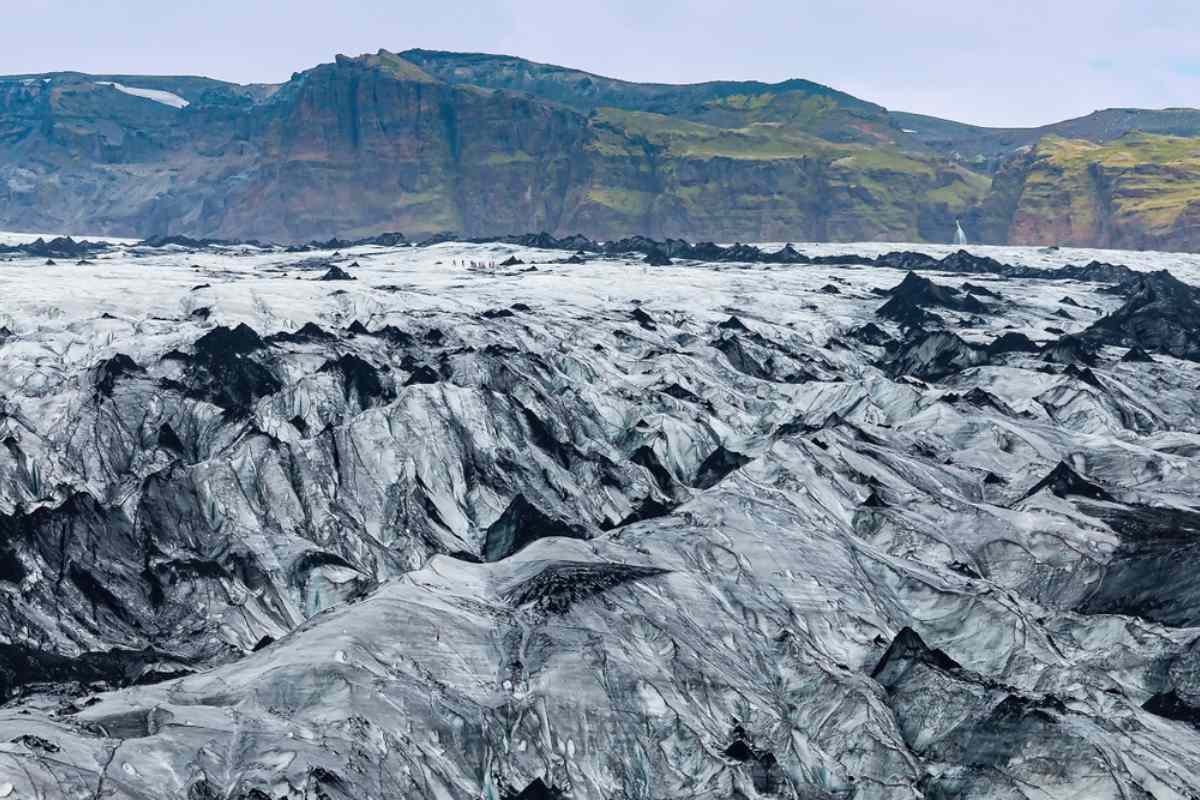
 By
By 
